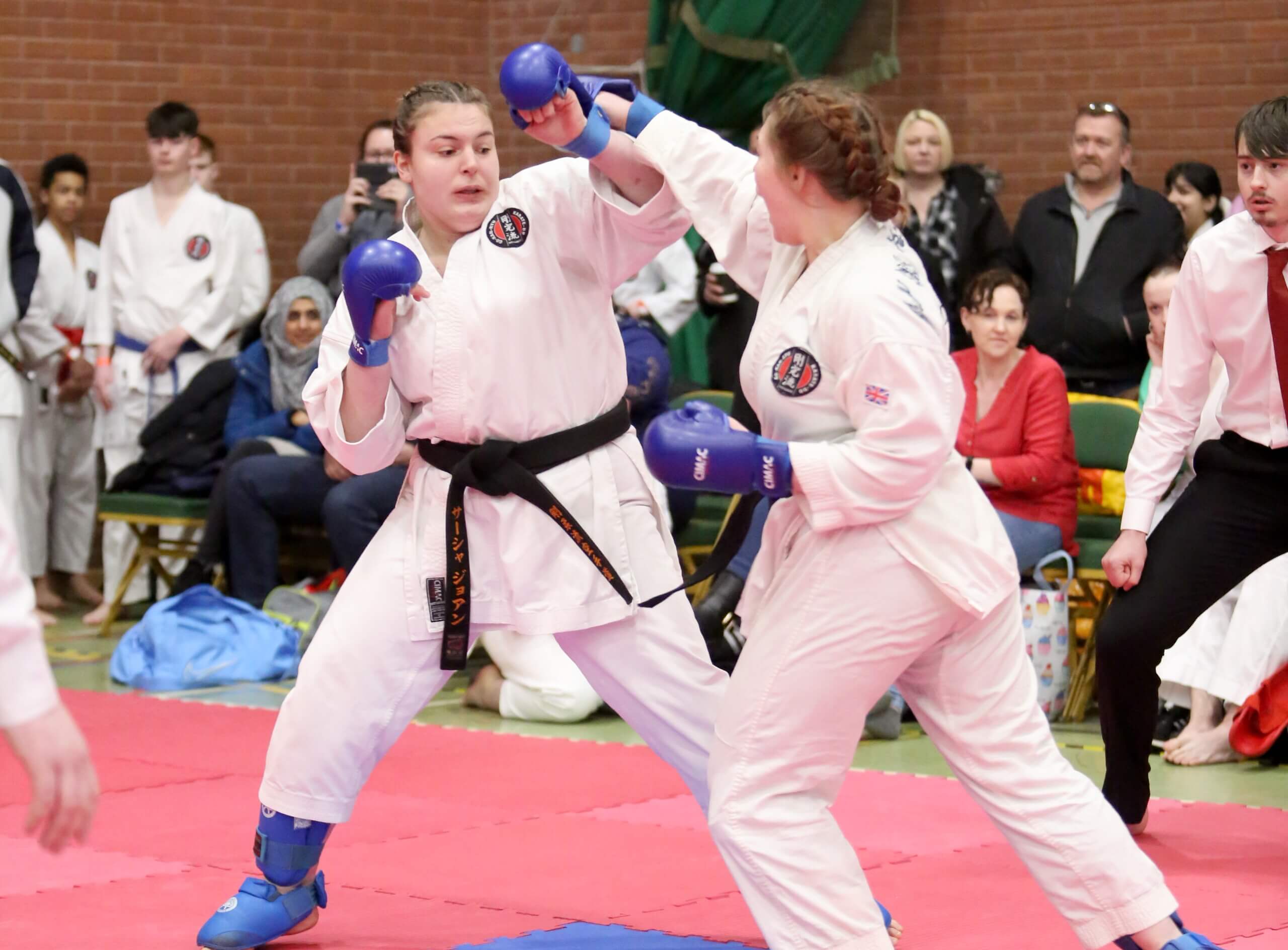The Myth of Strength

My wife and I have been karate-ka for many years, and through that time we have both been told by know-it-alls that, “karate is a waste of time because a big attacker will always beat a smaller guy or lady”. Yes, we live in a world preoccupied with strength. Even during training, we’re told to go as hard and fast as we can and to push ourselves. So even for the karateka, it’s easy to fall into the trap of thinking that karate is about strength, or being strong. You only have to look at a person’s Kata to see if they have the belief that karate is all about strength. It is strong yet stiff, rigid and rarely precise.
Now on the surface, it does make a valid point. Certainly if two untrained people battle, the bigger has an instant advantage and in nature, big fish do eat little fish! But this only works to a point. Once again in nature, look at the porcupine. If a larger animal tries to eat a porcupine it gets a nasty shock as the porcupine has the ability to raise, even release, its sharp quills. There are thousands of small species – land and sea – that have inherent defense mechanisms to protect themselves from and even kill larger animals.
“I would much rather fight a big person trying to be strong than a small person trying to be fast.”
So What Is It All About?
So if karate is not about strength, what is it about? Efficiency! That is, to get the absolute most result out of the absolute least effort. Despite many admiring the strength of some karate-ka, efficiency always beats strength. In fact, strength can be a disadvantage in karate. How so, you ask? Not long ago a female student remarked that “it wasn’t fair being female in karate because the guys seemed to progress faster than the girls”. Initially, this seemed a fair comment as the lower ranked male students were fighting more effectively and had what appeared to be stronger kata. So I observed both closely and discovered that almost all of the ‘guys’ were cheating, while the girls were forced, due to lack of strength, into doing things correctly from the start.
Now as everyone knows it is easy to get quick results when you cheat and so the guys were progressing faster – seemingly. The actuality was they were also developing bad habits, related to using incorrect muscles to gain power. Chances are that during the mid grades, when a stricter emphasis on technique is placed, they would be forced to ‘unlearn’ many of these habits, to relax more in their technique. Meanwhile, the girls who at first didn’t appear as effective would begin to catch up, even overtake them. From my experience, I have surmised that more often, the smaller people become competent faster than the big ones.
“The field mouse is fast but the owl can see in the dark.”
How Efficiency Works
Speaking as an average guy (6’2’’ and 100 kg) I would much rather fight a big person trying to be strong than a small person trying to be fast. So how is it that efficiency works? Here are a few figures I have researched for you:
- A person without training can, on average, put about 10% of their bodyweight correctly into a blow.
- A ‘competent’ martial artist can put up to 95% of their body weight into a blow, with the figure rising from low to high as experience increases.
- The average amount of force required to break a bone or “knock someone out” is in the order of 20kg – regardless of your attacker’s size.
So let’s go back to a girl facing a large attacker. Our hero weighs 50kg and is a black belt in karate, so she can get around 50% (25kg) of her body weight into her technique. Our attacker, on the other hand, weighs 100kg but with no training can only put around 10% (10kg) of his body weight into his punch. That means that our ‘little girl’ is actually hitting two and a half times harder. Add the fact that she has good targeting and there isn’t a person on the planet that will be able to withstand a precisely aimed blow.
“Winning by aggression and bulk is far less useful to your training than losing by skill.”
Becoming Efficient
That’s all well and good I hear, but how does one become efficient? To quote Shihan, “Three words: Technique, Technique, Technique”. So here are some technique pointers leading to efficiency:
A.) All of your power comes from the ground through your legs. A good solid stance and lots of practice with moving from one stance to another are essential for getting power into your techniques. Kata is great for this.
B.) Relax. Muscles work better, movements become more fluid and transitions easier when you’re relaxed. Energy is not trapped in the muscles but allowed to flow out from the legs and into the hands.
One major problem when working on this area is the feeling that you are ‘slacking off’ when you relax. After all, you are used to ‘pushing yourself to the limit, till everything hurts’, but in truth, you are getting get more power for less work, so while it feels like you aren’t trying as hard, you are becoming more efficient.
C.) Focus. It is very hard to do something when you have no idea of what you are doing. During kihon (basics), think about what you’re trying to achieve. During kata, imagine where your opponents are and what they are doing. During kumite, forget about trying to win and focus on trying to get your hands and feet where you want them to be – if your opponent blocks your technique today, this is irrelevant in terms of increasing your skill. Winning by aggression and bulk is far less useful to your training than losing by skill.
D.) Look for signs that it is working. The most obvious outward sign of efficiency is grace. The next time you get the privilege to watch Shihan or one of GKR’s top exponents perform kata or kumite, notice that it isn’t their strength which is impressive but rather how smooth they look, the grace of their techniques. It is this grace of movement that makes karate a martial art. I’ll never forget seeing a video of myself sparring with Kancho. My techniques were so rigid, illustrating how strong and aggressive I was trying to be. Yet all I did was open myself up. Kancho, in contrast, looked like he could have been reading the paper while having a cup of tea.
It Can Be a Discouraging Road
The search for efficiency will be a long, hard and often discourage one.
So for the ‘smaller’ readers, who may currently get pushed around in kumite, don’t get discouraged by your lack of strength because that is not what karate is all about. Besides, we all have our advantages. As it’s said, ‘The field mouse is fast but the owl can see in the dark’.
And for the ‘larger’ readers, like me, – don’t allow yourself to slip back into relying on strength. Believe me, the first time that you get through a kata or sparring session and think, “Gee that was too easy I must have been slacking off” then someone comes up and tells you how ‘strong’ you looked, you will realize it was worth all that effort. Remember don’t get down; keep trying because the first step to succeeding in anything is to fail!
By Malcolm Ball



